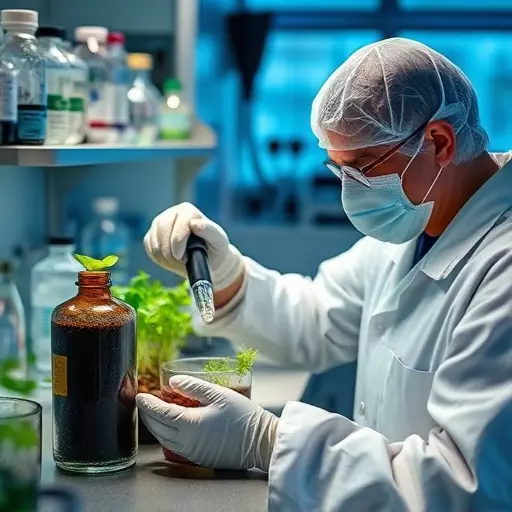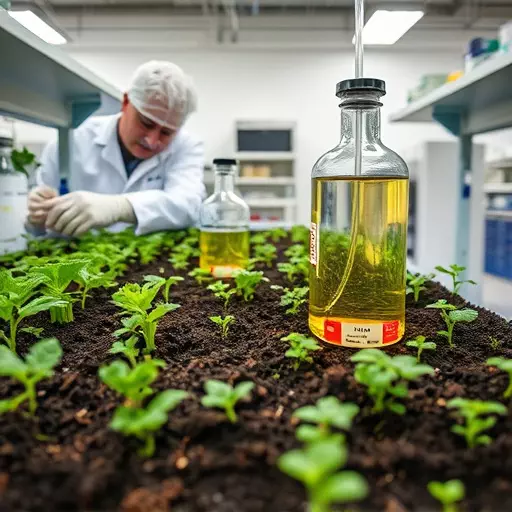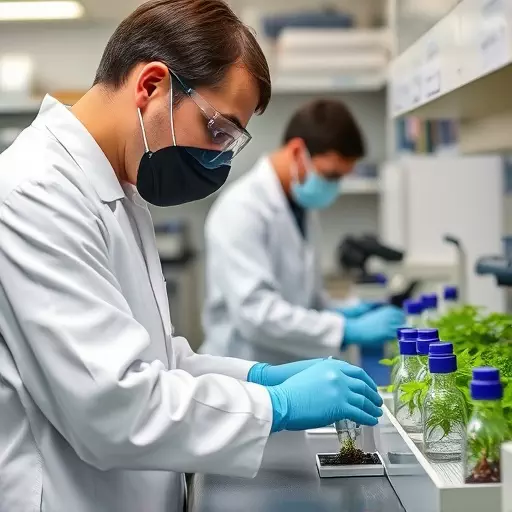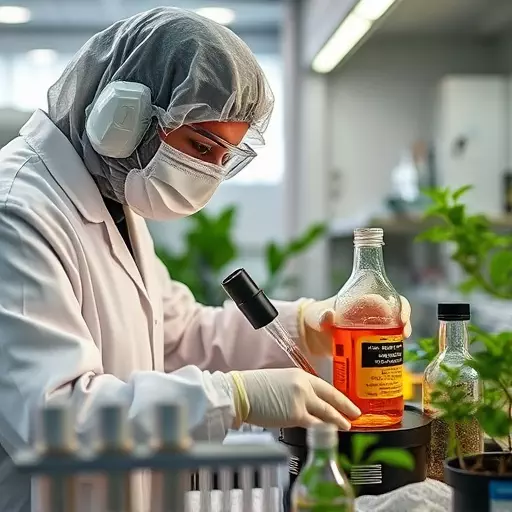Lab work in Warren-Troy-Farmington Hills is a dual-purpose powerhouse. Forensic applications of isotope analysis authenticate ancient artifacts and manuscripts while optimizing historical understanding. Beyond archaeology, these labs also test soil health, providing critical insights to farmers and fostering sustainable agricultural practices. This versatile approach leverages advanced techniques for both historical preservation and modern crop optimization.
Unraveling the mysteries of ancient history demands meticulous scrutiny, and laboratories play a pivotal role in authenticating artifacts and manuscripts. This comprehensive guide explores the intricate process of lab work in renowned sites like Warren-Troy-Farmington Hills, delving into case studies that showcase its significance. We uncover the power of isotope analysis as a forensic tool, revealing secrets hidden within ancient relics. Furthermore, we discuss the vital contribution of agricultural labs in testing soil health, optimizing crop growth, and ensuring sustainable food practices for future generations.
- The Role of Labs in Authenticating Ancient Artifacts: A Comprehensive Overview
- Case Studies: Lab Work in Warren-Troy-Farmington Hills and Beyond
- Isotope Analysis: Unlocking Secrets Through Forensic Applications
- Agricultural Labs and Soil Health Testing: Optimizing Crops for the Future
The Role of Labs in Authenticating Ancient Artifacts: A Comprehensive Overview

In the realm of archaeological discovery, labs play a pivotal role in authenticating ancient manuscripts and artifacts, providing invaluable insights into our past. These facilities act as crucibles for meticulous examination and analysis, employing advanced techniques to verify the authenticity and origin of historical treasures. One such method is forensic applications of isotope analysis, originally honed for crime solving, which has found new life in authenticating artifacts. By studying the isotopes present in various materials—from paper to soil—labs can uncover crucial links to specific geographical locations and time periods, thereby establishing a robust chain of custody.
Beyond authentication, labs also contribute to fields like agriculture through testing soil health. This process mirrors, in some ways, the meticulous scrutiny applied to ancient artifacts. By analyzing soil samples, agricultural labs identify nutrient deficiencies or imbalances, providing insights that farmers can use to optimize crop yields. This convergence of lab work in Warren-Troy-Farmington Hills and forensic applications underscores the multifaceted role these facilities play, extending from the preservation of our cultural heritage to the enhancement of modern-day agricultural practices.
Case Studies: Lab Work in Warren-Troy-Farmington Hills and Beyond

In the realm of historical preservation, lab work in Warren-Troy-Farmington Hills and its surrounding areas has played a pivotal role in authenticating ancient manuscripts and artifacts. One notable case involves the application of forensic applications of isotope analysis in crime solving, where specialized labs have deciphered the origins of archaeological finds. By analyzing the isotopic signatures of materials, scientists can trace the geographical and temporal context of artifacts, offering crucial insights into their authenticity and historical significance.
Beyond criminal investigations, testing soil health in agricultural labs for crop optimization has expanded the reach of lab work in this region. These facilities employ advanced analytical techniques to assess soil fertility and nutrient levels, providing valuable data for farmers seeking to enhance crop yields. This dual use of laboratory capabilities—in both forensic and agricultural contexts— highlights the versatility and importance of lab work in Warren-Troy-Farmington Hills and its potential impact on various fields beyond.
Isotope Analysis: Unlocking Secrets Through Forensic Applications

In the realm of lab work at Warren-Troy-Farmington Hills, researchers employ innovative techniques like isotope analysis to unravel ancient mysteries. This powerful tool, often used in forensic applications for crime solving, can reveal hidden secrets within manuscripts and artifacts. By examining the ratios of different isotopes in a sample, scientists gain insights into its origin, age, and even environmental context. For instance, testing soil health in agricultural labs using isotope analysis offers valuable data for optimizing crop growth, demonstrating versatility in this forensic method’s applications.
The precision of isotope analysis allows specialists to differentiate between similar materials or pinpoint the geographical source of ancient artifacts. This is particularly beneficial when authenticating manuscripts and artifacts from different historical periods or regions. Moreover, its ability to provide objective data makes it an indispensable asset for historians, archaeologists, and conservators seeking to verify the authenticity and provenance of cultural treasures.
Agricultural Labs and Soil Health Testing: Optimizing Crops for the Future

In the realm of lab work in Warren-Troy-Farmington Hills, agricultural laboratories play a pivotal role in advancing farming practices. These facilities employ various scientific methods, including soil health testing, to optimize crop growth and yield. By examining soil samples, agronomists can pinpoint nutrient deficiencies or imbalances that may hinder plant development. This data allows farmers to make informed decisions regarding fertilization and irrigation strategies, ensuring their crops receive the best possible care.
The forensic applications of isotope analysis in crime solving have expanded beyond criminal investigations to benefit agricultural labs as well. Testing soil health using isotopic signatures can provide insights into environmental conditions and historical land use patterns. This knowledge is invaluable for understanding the suitability of different crop varieties and implementing sustainable farming practices that preserve soil integrity over time.
